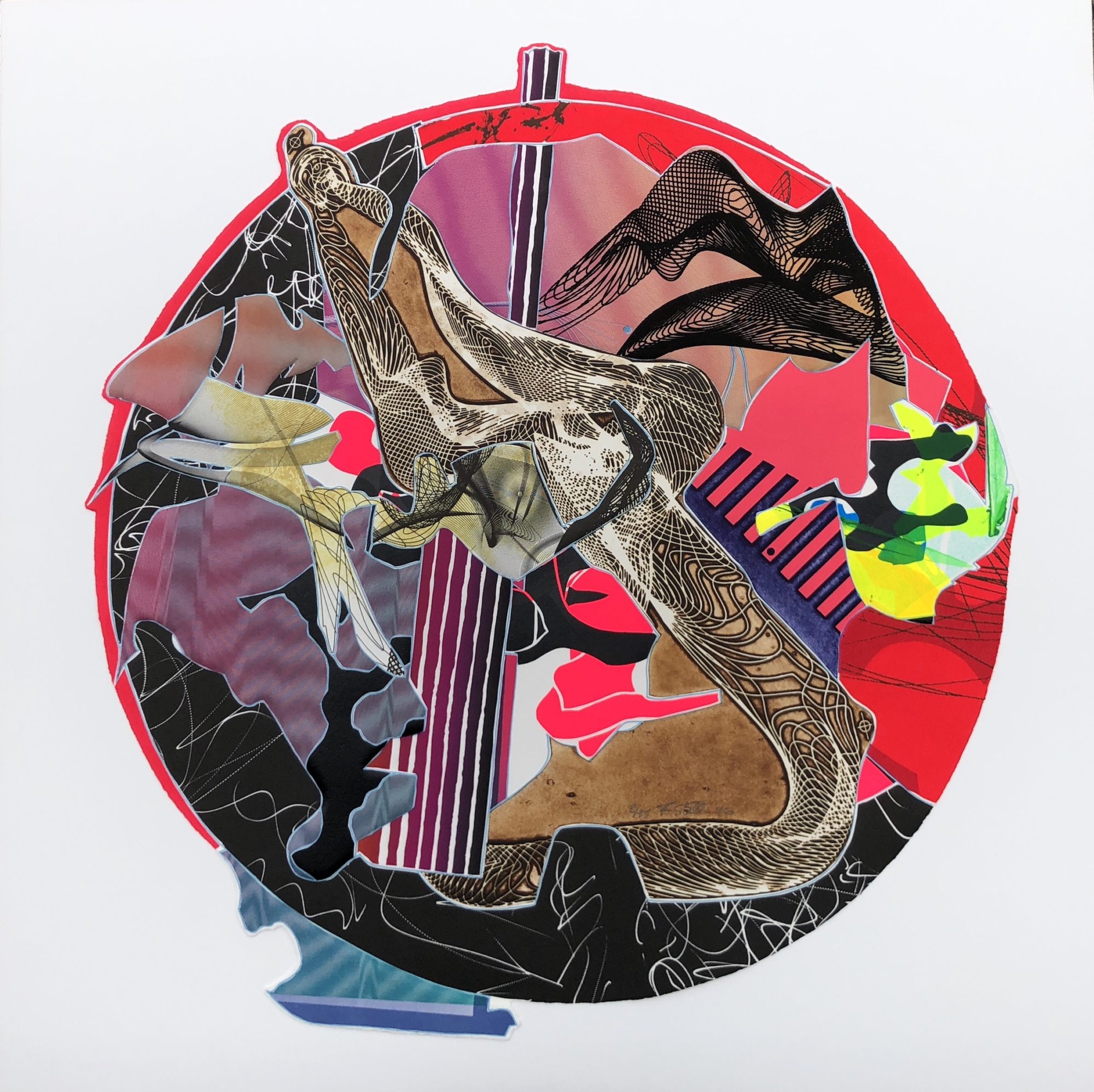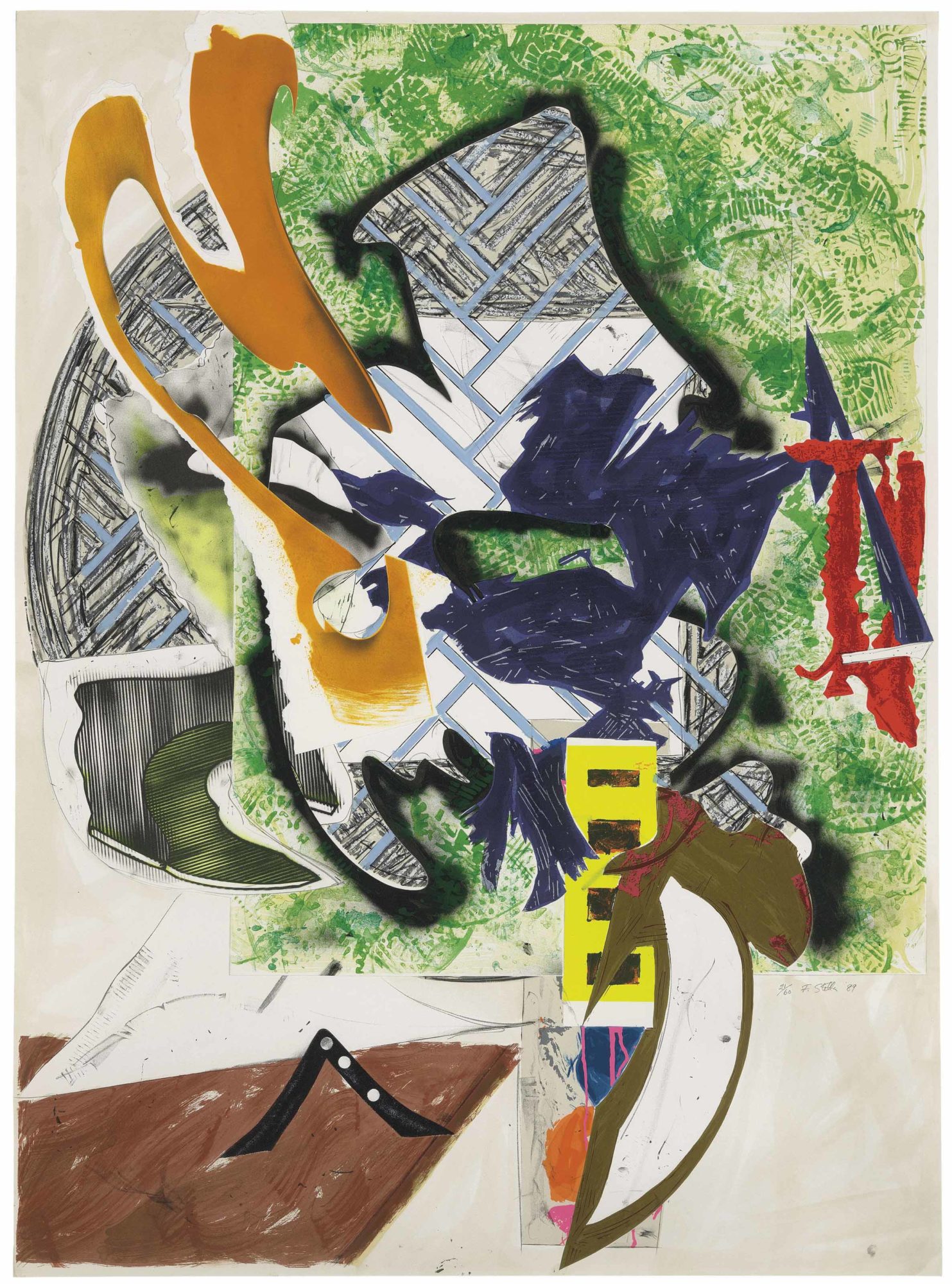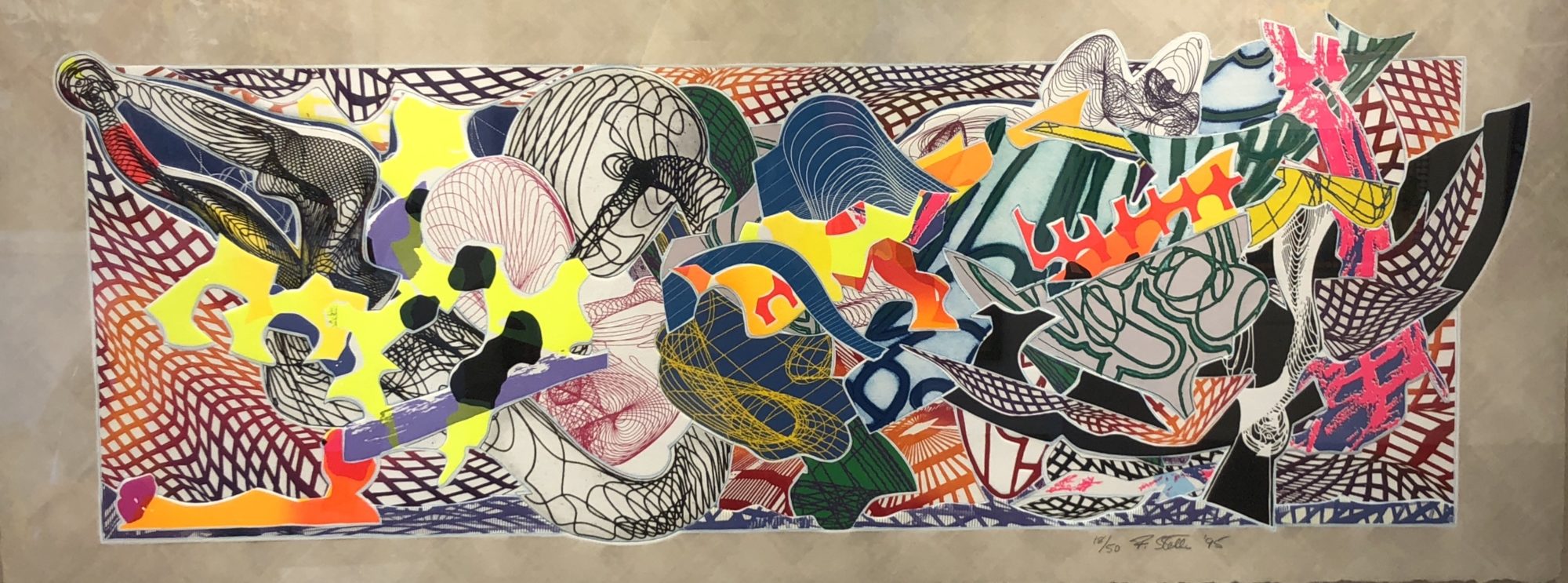Frank Stella – Sanor
Frank Stella, Sanor is an original print from the Imaginary Places II series. This artwork made in 1996 is a Lithograph, Screenprint, Etching, Aquatint, Relief and Engraving Print in colors on TGL hand-made paper. From the edition of 35, signed and numbered in pencil. Published by Tyler Graphics, Ltd. blindstamp, Mount Kisco, New York. Axsom 247.
Stella has constantly fought the rules and regulations of the painted surface, and even the medium, using house and car paint, cast aluminum, fiberglass, and the latest 3-D-printing techniques. In the last three decades, he’s only increased his experimental approach with sculptural works that near a state of architecture in their vertiginous balance and scale. He’s even allowed narrative—that curse word of formalist abstraction—into his method, particularly in his Moby-Dick series (1985-97), where each piece is inspired by a different chapter from Herman Melville’s distinctly American novel. He’s also used music as an instigator of form with a recent series of works that connect to the sonatas of 18th-century Italian composer Domenico Scarlatti.
| Title | Sanor |
|---|---|
| Medium | Aquatint, Engraving, Etching, Lithograph, Relief, Screenprint |
| Year | 1996 |
| Edition | 35 |
| Catalogue Raisonné | Axsom 247 |
| Signature | Signed |
| Size | 28.75 x 28.75 (in) 73 x 73 (cm) |
| Price | SOLD |
Description
Frank Stella, Sanor is an original print from the Imaginary Places II series. This artwork made in 1996 is a Lithograph, Screenprint, Etching, Aquatint, Relief and Engraving Print in colors on TGL hand-made paper. Signed and numbered in pencil from the edition of 35. Published by Tyler Graphics, Ltd. blindstamp, Mount Kisco, New York. Axsom 247.
But perhaps what truly sets Stella off even from his legendary peers is that the Massachusetts-born artist is no one-time innovator. Almost singularly in the history of contemporary art, Stella has continued to evolve in major ways, never letting his work settle or get stuck in a particular style, decade, or vein. The controlled minimalist of the late ’50s and early ’60s became, in the next decades, a maximalist—the monochrome palette giving way to a riot of color. And it wasn’t long before the two dimensions of the canvas—almost a holy virtue of mid-century painting—made way for a tangle of planes and shapes and spokes that approached and surpassed the precipice of sculpture.
Stella has constantly fought the rules and regulations of the painted surface, and even the medium, using house and car paint, cast aluminum, fiberglass, and the latest 3-D-printing techniques. In the last three decades, he’s only increased his experimental approach with sculptural works that near a state of architecture in their vertiginous balance and scale. He’s even allowed narrative—that curse word of formalist abstraction—into his method, particularly in his Moby-Dick series (1985-97), where each piece is inspired by a different chapter from Herman Melville’s distinctly American novel. He’s also used music as an instigator of form with a recent series of works that connect to the sonatas of 18th-century Italian composer Domenico Scarlatti. Frank Stella was born in Malden, Massachusetts, on May 12, 1936. He attended the Phillips Academy in Andover (1950-1954), where he studied painting with Patrick Morgan. Stella graduated from Princeton University with a bachelor of arts degree in history in 1958. Because Princeton did not offer a degree in studio art, his development during these years was largely the result of self-teaching. However, he received important advice and encouragement from the painter Stephen Greene and the art historian William Seitz, both then teaching at Princeton.
Stella’s first important group show was the Museum of Modern Art’s “Sixteen Americans,” held in 1959; this exhibition established him as one of the most radical young artists working in the United States. He instantly gained notoriety for his Black Paintings, a series of linear shapes and squares in various shades of black. A year later he had his first one-man show in New York City. Throughout the 1960s he exhibited regularly, and his work was included in numerous national and international group shows, the most important of which were the São Paulo Biennial and the Fogg Museum of Art’s “Three American Painters,” both held in 1965. His reputation and influence grew steadily, and in 1970 he was honored with a retrospective exhibition by the Museum of Modern Art.
Frank Stella, Sanor
Additional information
| Title | Sanor |
|---|---|
| Medium | Aquatint, Engraving, Etching, Lithograph, Relief, Screenprint |
| Year | 1996 |
| Edition | 35 |
| Catalogue Raisonné | Axsom 247 |
| Signature | Signed |
| Size | 28.75 x 28.75 (in) 73 x 73 (cm) |
| Price | SOLD |





